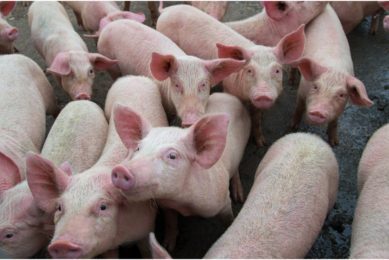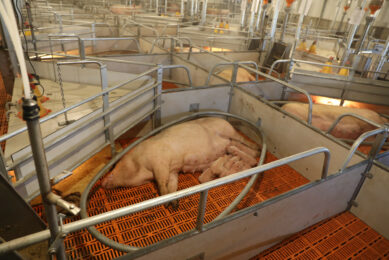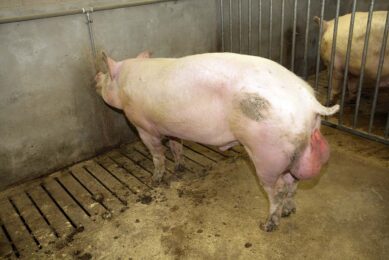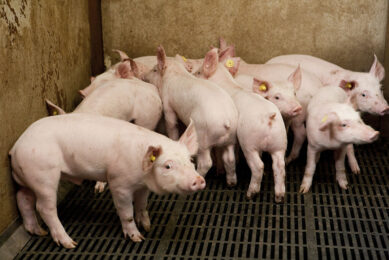Focus on boar taint
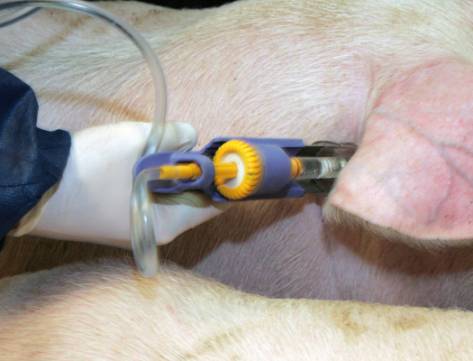
The way is open for EU swine producers to raise male pigs intact, with improved feed conversion and carcass quality compared to castrates, while still reducing boar taint as effectively as castration. In this series, Pig Progress focuses on the journey to develop a vaccine to control boar taint, its most recent implementations and the consequences for European – and global – pig production.
Part 1. The beginning of the end of castration
The number of countries in which a vaccine against boar taint can be obtained has been growing steadily. What steps were needed to get this far? A short trip back in time reveals a long and winding road.
By Jim Allison, technical director swine, Pfizer Animal Health
The recent EU approval and launch of Improvac, the only vaccine to reduce boar taint, may not spell the immediate end of piglet castration; but it does, perhaps, herald the beginning of the end. The pressure has been building for an end to the procedure on welfare grounds for some time. Over recent years members of the pork supply chain and legislators in individual markets have introduced or are considering a number of measures, ranging from an outright ban to the compulsory use of anaesthesia. But the lack of an effective, commercially proven alternative has been a significant barrier.
The key of vaccinating against boar taint is to control the release of steroids, such as testosterone and androstenone.
The way is now open for EU swine producers to raise male pigs intact, with improved feed conversion and carcass quality compared to castrates, while still reducing boar taint as effectively as castration. So not only can they address welfare concerns once and for all, but they can also improve efficiency and quality of output.
Step back in time
The vaccine is already approved in over 50 countries, with plans well advanced for others. But this is no sudden revelation – it has been a long and winding road. The technology that eventually led to the development of a vaccine to control boar taint actually began life in Australia some 20 years ago. In the early years, formulation proved to be a challenge and the initial project nearly ended in 1993 when it was decided that it may not be worth spending more time and money trying to overcome the problem. It was nearly a case of ‘hello, goodbye’. The project was about to disappear forever.
The story might have ended there but for the determination of one researcher, Dr David Hennessy, who would not let it be and saw the potential for the concept in the swine industry. He convinced the company to supply him with enough vaccine to conduct a small trial himself. The study was a success and the development programme was re-started.
Hennessy was working at one of Australia’s State government research facilities at the Victorian Institute of Animal Science (VIAS), which had been collaborating on the development of the new technology since 1988. Because of his background in pig production Hennessy had seen the potential of the new technology as a way of avoiding the losses associated with castration while keeping the highest welfare standards and still reducing boar taint. However, a lot of development lay ahead and the product in those days was very different to the one that is now being made available around the world.
Making it work
The idea behind the vaccine is simple: encourage the pig’s own immune system to produce antibodies which inhibit the function of the testicles and thus reduce the level of boar taint compounds in the meat. The key is a substance called Gonadotrophin Releasing Factor (GnRF), which is released by the pig’s brain and starts to stimulate the release of steroids, such as testosterone and androstenone (a major cause of boar taint), from the testicles as the male pig reaches puberty. If the action of GnRF can be stopped – then the build up of taint compounds in the meat can be reversed.
One option could have been to develop drugs that block the action of GnRF – so-called GnRF antagonists. But in the case of food animals, vaccines offer a much more acceptable answer that avoids the residue and consumer safety concerns sometimes associated with drug treatments. The idea of a vaccine to stimulate the production of antibodies to GnRF and stop its action may be simple, but it proved very difficult to realise. After a considerable amount of development work, the early formulation appeared far too expensive to manufacture to be a commercial success. Something had to be done: a less expensive way of coupling GnRF to a suitable carrier protein had to be found. Once again, the funding was withdrawn and the project halted. Once again, the research team refused to be beaten.
In late 1995, an alternative formulation was suggested and tested. It answered the production issues, and development was recommenced with a view to registration. But many more hurdles remained to be overcome. For example timing: like some other vaccines, Improvac had to be given as two doses: the first ‘primed’ the immune system and the second resulted in high levels of circulating antibodies. The ‘window’ between doses for optimal response had to be established by field studies, as did the optimal timing for the second dose, by measuring antibody levels until testicular function eventually resumed and the risk of boar taint returned. Many studies were conducted to establish the effect of vaccination, optimal timing and many other details.
GnRF Analog
The coupling of GnRF to a carrier protein has already been mentioned, and is a key aspect of the vaccine. GnRF is a normal substance in the body and it does not normally stimulate antibody production because it is too small. There was also the issue of avoiding any direct GnRF like action from the vaccine itself. The answer was to develop an analog of the molecule which was similar enough to trigger the production of antibodies against natural GnRF but different enough to not stimulate testicular function like natural GnRF. The synthetic molecule was then attached to a carrier protein to make it large enough to be recognised by the pig’s immune system.
In 1998 the world’s first vaccine for the reduction of boar taint in male pigs was finally licensed in Australia. Its use in what is essentially a non-castrating market helped to identify and iron out any remaining issues in a commercial environment. But, although the new product represented a potential revolution in swine production, its development into a global brand would depend on the technology being taken over in 2004 by a company with a global presence and the capacity for developing registration dossiers for markets like Europe: Pfizer Animal Health.
One decade
Ten years on from its first launch, the vaccine is now making an impact on a global scale. In that time, the pressure for a more animal friendly alternative to physical castration has grown significantly in some markets, such as Europe; and the volatility in feed prices has stimulated interest in more efficient forms of production. Vaccination against boar taint has not been an overnight sensation. It took many years to develop and has already accumulated over ten years of commercial experience in over 10 million pigs. After more than ten years, its safety record has become well established.
Source: Pig Progress Volume 25 nr 6



